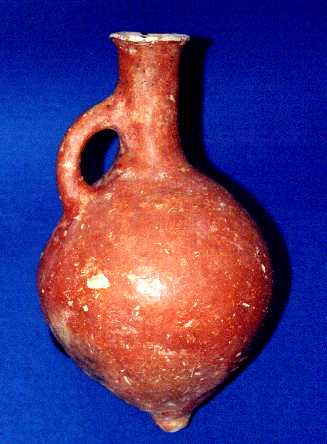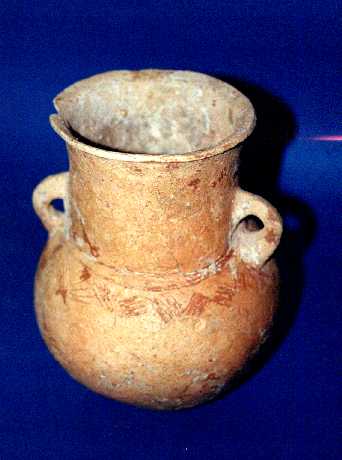
Late
Bronze Age in Cyprus
The
Late Bronze Age (1,600-1,050 B.C.) was one of the most formative
periods of the life of ancient Cyprus. The island's
international contacts extended from the Aegean Sea to the
Levant and the Nile Delta. (Thutmose III of Egypt claimed Cyprus
as one of his conquests in about 1,500 B.C.)

Polished Ceramics small amphora with
red cylindrical neck, circa
2300-1650 BC
Writing, in the
form of a linear script known as Cypro-Minoan, was borrowed from
Crete. Cypriot craftsmen were distinguished for fine jewellery,
ivory-carving, and bronze figures.
From about
1,400 B.C. a profusion of Mycenaean pottery was imported from
Greece, and it is possible that Mycenaean artists accompanied
the merchants. After 1,200 B.C., with the collapse of Mycenaean
civilisation, there signs of immigration from the Peloponnesus.

Polished Ceramics Cypriot vase
with
globular body cylindrical neck 2 small
ansette 15cm, circa
2300-1650 BC
The principal
city and port was Engomi (west of
Famagusta); its massive city
walls and houses of hewn stone are evidence of a high degree of
prosperity.
